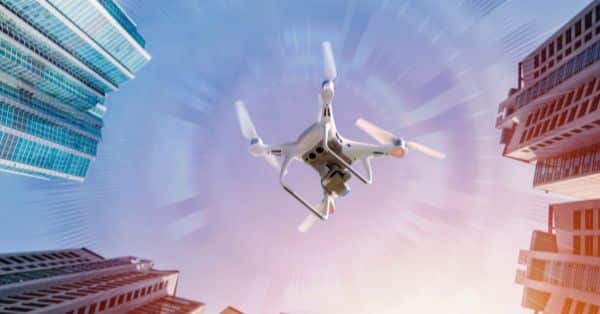Nokia today revealed it is the first to offer a CE-certified, turnkey drone-in-a-box solution, designed to meet the growing demands of organizations including public safety agencies, smart cities, construction, energy and defense. CE-certified to meet safety requirements of the European Union, the Nokia Drone Networks solution connects over public and private 4G/LTE and 5G networks to enhance situational awareness for first responders and other professionals.
The solution is manufactured in Europe and comprises Nokia drones, docking station, dual gimbal camera and edge cloud processing using Nokia MX Industrial Edge (MXIE). By connecting over public and private 4G/LTE and 5G networks, customers will benefit from the highest reliability. Using cellular connectivity technologies also offers higher data rates and lower latency enabling more data to be streamed than over Wi-Fi. Beyond visual line of sight (BVLOS) operations with real-time kinetic (RTK) positioning improves situational awareness. Dual modem connectivity allows Nokia drones to simultaneously connect to multiple networks, complying with system redundancy that is commonly required by aviation regulatory bodies.
The Nokia Drone Networks solution can be operated remotely for search and rescue activities, and to assess damage in a hazardous environment. Nokia drones can also be programmed to manage autonomous scheduled flights for applications like additional security at large events or to manage regular remote equipment inspections. The docking station protects the drone and payload, such as the sensor devices or dual gimbal camera, from external hazards and harsh weather while it remotely charges the drone to prepare for the next flight.
When used in conjunction with Nokia MXIE, data from Nokia drones can be collected and processed in real time at the edge cloud. An open API framework allows agencies and enterprises to onboard pre-integrated Nokia and third-party applications and systems and take advantage of a growing number of compelling public safety and Industry 4.0 use cases for drone automation, including object identification, tracking and network measurements
Nokia and the New York Power Authority have already demonstrated the use of the Nokia Drone Networks solution, connected over private LTE, for transmission line inspection.
Thomas Eder, Head of Embedded Wireless Solutions at Nokia, said: “Our mission is to reshape the industrial UAV (unmanned aerial vehicle) market, providing enhanced situational awareness to aid search and rescue, surveillance, and other UAV operations in a wide variety of industries. Nokia Drone Networks has been designed to comply with the remote operation requirements of aviation regulatory bodies such as EASA in Europe and FAA in the United States. This will help us address growing market demands as a turnkey provider with a solution designed and produced in Europe. The unique feature set enabling the integration of Nokia drones with third-party applications will aid the transformation of the drones, allowing them to be used as a flying data collection platform leveraging reliable 4G and 5G edge cloud connectivity.”
Depending on the deployed configuration, Nokia drones offer more than 50 minutes of flight time and cover distances of more than 30 km due to the unique hardware architecture, integrated software innovations and the 4G/5G connectivity.
The solution will be featured at Nokia booth J60 during Critical Communications World in Helsinki, 23-25 May 2023.
Source: Nokia Press Release































